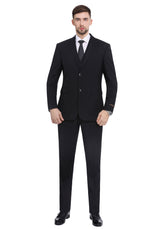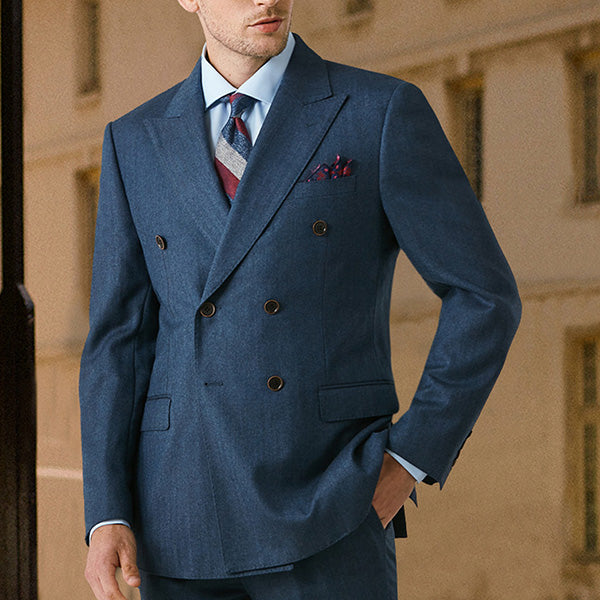Guide to Shirt Cuffs
Origins of the Shirt Cuff
The history of shirt cuffs dates back to the period between the 15th and 18th centuries, when affluent men adorned their cuffs with lace, a style that endures today among Catholic clergy.
As fashion evolved, bespoke tailors on Savile Row began to innovate, creating a variety of cuff styles: button cuffs, link cuffs (both single and double), and convertible cuffs. These variations started to signify the level of formality a shirt conveyed, with button cuffs representing the least formal option and link cuffs denoting the most sophisticated.
Interestingly, all shirts were originally crafted from linen rather than cotton. This historical context is reflected in the phrase “show some linen,” which describes the visible portion of shirt cuff peeking out from a jacket sleeve. This expression connects us to the past, highlighting the enduring influence of fabric and craftsmanship in men’s fashion.
How to choose?
One fundamental choice in selecting a cuff for your shirt is whether to go with a single or double cuff.

The Double Cuff
The double cuff, often referred to as the French cuff, enjoyed significant popularity over a decade ago, a trend influenced by the stylish aesthetics of the time. It was a staple in many professional environments, especially during the height of the “Mad Men” era, when sophistication reigned supreme.
Today, double cuffs have become less common, primarily due to shifting fashion trends and their inherently formal nature. The design of a double cuff, which folds over to conceal the seam, offers a polished appearance that is well-suited for suits and blazers but can feel out of place with more casual wear like knitwear.
Back in the day, many men would sport double-cuffed shirts with chinos on Fridays, creating a mismatched look that was often obvious. While double cuffs have their place, single cuffs are increasingly favored for their versatility. They pair well with a range of fabrics, from worsted wool to casual weekend attire, making them a staple in the modern man’s wardrobe.
That said, I still recommend having a couple of double-cuffed shirts for special occasions. They provide a refreshing change and serve as an opportunity to wear cufflinks, which remain one of the few traditional forms of men’s jewelry.
Styles of Double Cuff
Within the realm of double cuffs, you’ll encounter different styles, such as rounded, angled, or square corners. While these variations exist, they rarely impact the overall aesthetic. If you appreciate them, wear them, but don’t get too caught up in the details—focus instead on fit and fabric quality.
The cocktail cuff, often referred to as the Milanese or Neapolitan cuff by some, features a folded-back design that leaves a triangular gap. While it’s an interesting style, I’d caution against elevating it to the status of a signature style. Remember, trends like these are fleeting, and what’s truly important lies in the subtleties of fit and cloth.
The Single Cuff
Single cuffs also come with their own style choices, though I emphasize that fit is paramount. Variations include rounded, angled, or square corners, with rounded being the standard. You may also find shirts with one, two, or even three buttons on the cuff. Personally, I believe one button suffices. Multiple buttons add unnecessary redundancy, which is often unnecessary in modern styling.
Some may argue for the practicality of multiple buttons, but I haven’t encountered a compelling reason for them. I prefer the Italian style, where the single button is placed lower on the cuff, close to its edge. This design enhances wrist movement and allows for easier cuff opening, creating a more comfortable fit.
Fit Considerations
Fitting a single cuff close to the wrist has its advantages. It allows for a slight excess length without the cuff sliding down the hand. This ensures the cuff stays in place, even when you extend your arm. However, the downside is that it may restrict the ability to wear a watch beneath it.
Conversely, a tapered cuff design can complicate watch-wearing as well. Many find it necessary to wear their watch over the cuff, a practice I do not recommend. As Tom Ford aptly noted, wearing a watch over the cuff can come off as pretentious.
However, I believe it’s possible to achieve a comfortable balance, allowing for a slim watch to fit underneath. It’s worth discussing with your shirtmaker to find the right fit. If you wear a larger sports watch, you may encounter more difficulties fitting it under a dress shirt cuff, but thankfully, this trend is on the decline.
Another option is to have one cuff larger than the other to accommodate a watch, though this can lead to inconsistencies in how the cuffs function on different days.
Novelty Cuffs
There are several other cuff variations worth mentioning. Some single cuffs are designed to be fastened with cufflinks, resembling a half-French cuff. Convertible cuffs allow for but redirect focus from novelties to more fundamental aspects of style: the richness of fabric and the intricacies of fit. Gimmicks can be appealing for their simplicity, but a deeper understanding of cloth and fit will yield far more rewarding results in the long run.





